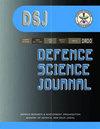用高温压缩变形评价含铜HSLA钢的再结晶特性
IF 0.8
4区 工程技术
Q3 MULTIDISCIPLINARY SCIENCES
引用次数: 0
摘要
变形过程中的动态再结晶(DRX)作用和变形后的静态再结晶(SRX)作用被认为是变形材料微观组织和织构变化的原因。特别是在需要以各种厚度的板的形式生产的高级钢中,热轧是主要的制造过程,在此过程中钢在轧辊下经历DRX和轧制道/股之间的SRX。了解此类钢的DRX和SRX特性对于优化热轧参数,实现所需的微观结构以及目标机械性能至关重要。在这项研究中,通过使用Gleeble热机械模拟器进行高温变形研究,探索了DMRL开发的含acu的HSLA钢的动态(DRX)和静态再结晶(SRX)行为的某些关键方面。通过在奥氏体状态下的单轴压缩测试,确定了钢中普遍存在的连续和不连续DRX域,并确定了启动动态再结晶的关键参数,即临界应变(ec)、临界应力(sc)、峰值应力(sp)和峰值应变(ep)作为温度和应变速率的函数。通过在不同温度和不同中间静态再结晶(ISRT)时间下的固定应变率和每次命中应变的单轴双冲击压缩试验来评估SRX特性。从分数软化数据中,可以估计出50%再结晶时间t0.5、50%再结晶温度t0.5和活化能QSRX等参数。虽然钢表现出良好的塑性变形特性,但结果表明,铜在延缓再结晶中的作用是显著的。本文章由计算机程序翻译,如有差异,请以英文原文为准。
Recrystallisation Characteristics of a Cu Bearing HSLA Steel Assessed Through High Temperature Compressive Deformation
Dynamic (DRX) operative duringdeformation and static recrystallization (SRX) operative after deformation are considered responsible for the changes in microstructure and texture of deformed materials. Especially in the case of advanced steels that are required in the form of plates of various thicknesses, hot rolling is the main manufacturing process during which the steel undergoes DRX under the rolls and SRX between rolling passes/strands. Knowledge on DRX and SRX characteristics of such steels is crucial for optimisation of hot rolling parameters,achieving the desired microstructure and consequently the targeted mechanical properties.In this study, certain key aspects of both dynamic (DRX) and static recrystallisation (SRX) behaviour of aCu-bearing HSLA steel, which was developed at DMRL, have been explored through high temperature deformation studies using Gleeble thermo-mechanical simulator. Through uniaxial compression testing in the austenitic regime, domains of continuous and discontinuous DRX prevalent in the steel were identified and critical parameters for initiation of dynamic recrystallisation viz., critical strain (ec), critical stress (sc), peak stress (sp) and peak strain (ep) were determined as a function of temperature and strain rate. SRX characteristics were assessed through uniaxial double hit compression tests with fixed strain rate and strain per hit but at different temperatures and with different imposed intermediate static recrystallisation (ISRT) times. From the fractional softening data, parameters such as time for 50% recrystallisation, t0.5, temperature for 50% recrystallisation, T0.5, and activation energy, QSRX have been estimated.Although the steel exhibited good plastic deformation characteristics, the results suggest that the role of copper in retarding recrystallisation is significant.
求助全文
通过发布文献求助,成功后即可免费获取论文全文。
去求助
来源期刊

Defence Science Journal
综合性期刊-综合性期刊
CiteScore
1.80
自引率
11.10%
发文量
69
审稿时长
7.5 months
期刊介绍:
Defence Science Journal is a peer-reviewed, multidisciplinary research journal in the area of defence science and technology. Journal feature recent progresses made in the field of defence/military support system and new findings/breakthroughs, etc. Major subject fields covered include: aeronautics, armaments, combat vehicles and engineering, biomedical sciences, computer sciences, electronics, material sciences, missiles, naval systems, etc.
 求助内容:
求助内容: 应助结果提醒方式:
应助结果提醒方式:


